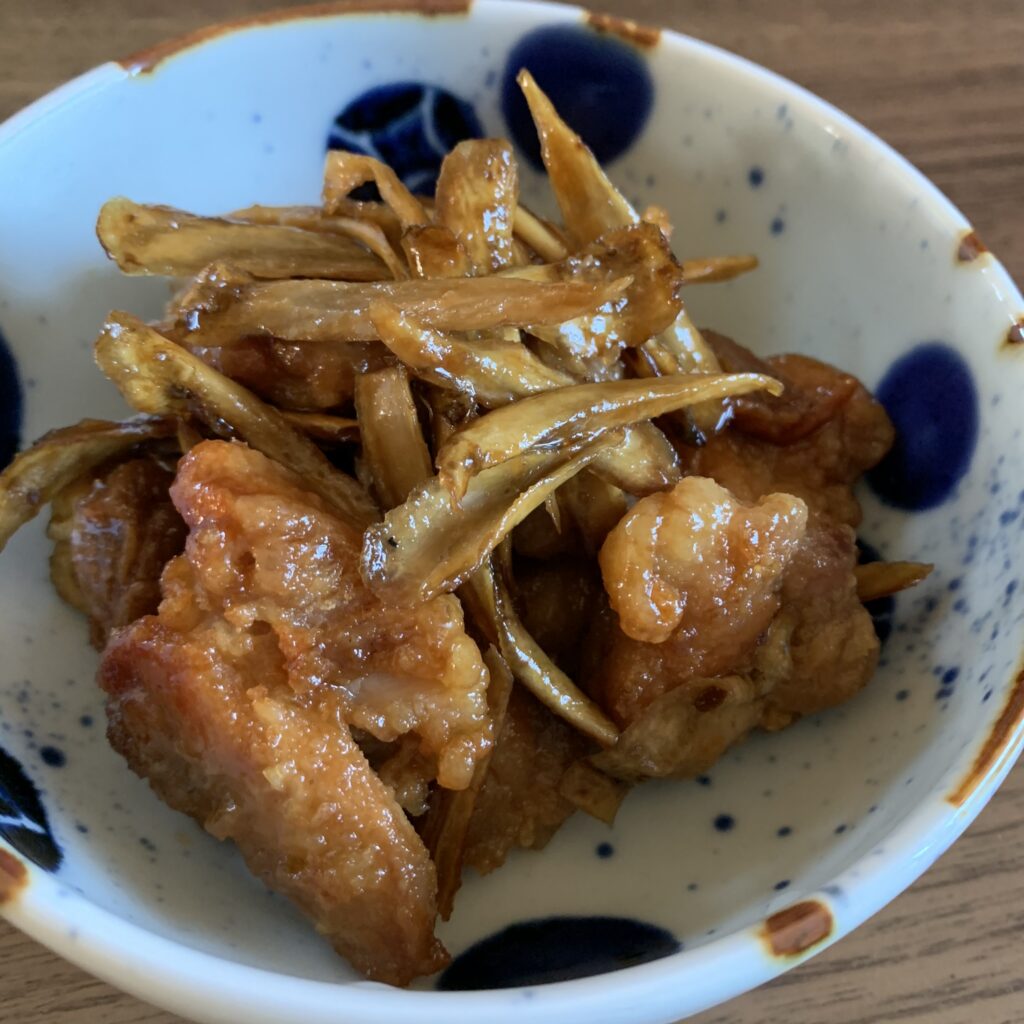
Tori gobo (鶏ごぼう)
What kind of dish is Tori gobo??
※tori=chicken, gobo=burdock roots
Fried chicken and burdock (gobo) mixed with soy sauce. Fried chicken is good enough on its own, but the burdock adds to Umami (旨み). Umami is something that gives depth to the taste, such as aroma and flavor.
It’s a taste that makes you want white rice. You can be very satisfied with just this side dish. It’s a standard side dish in supermarkets, but maybe it’s unique to Kyushu.
The burdock skin has a good aroma, so don’t remove it completely, just leave a little bit of it. Using the back of a knife, gently scrape away any dirt from the surface of the burdock root.
Burdock will discolor when exposed to air, so soak it in water immediately after cutting.Don’t leave it in the water for a long time, put it in a strainer to drain well, and cook it quickly before the color changes.
From spring to early summer, new burdock roots appear. Compared to normal burdock, it has less lye. It is characterized by being soft and easy to burn. Therefore, if you use fresh burdock, there is no need to soak it in water.
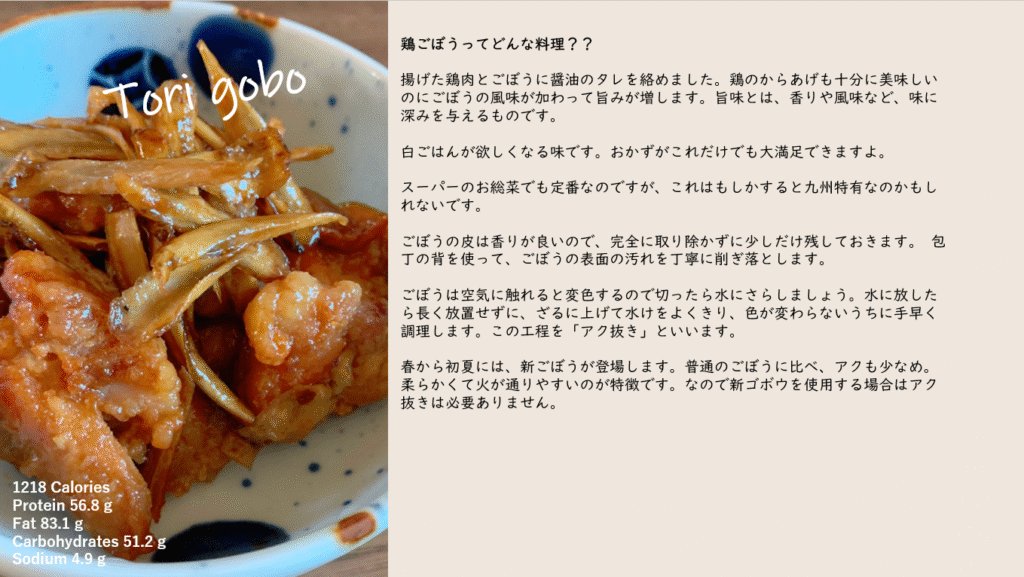

NUTRITION FACTS : Torigobo (stir-fried chicken burdock)

- 1218 Calories
- Protein 56.8 g
- Total Fat 83.1 g
- Total Carbohydrates 51.2 g
- Sodium 4.9 g
Oil absorption rate is 8%.
INGREDIENTS:Torigobo (stir-fried chicken burdock) (3SERVINGS)
- Chicken thigh 320g
- Salt 1g
- Wheat flour(cooking flour) 16g
- Oil appropriate amount
- Burdock root 100g
- Sesame oil 12g
- ☆Soy sauce 25g
- ☆Sugar 15g
- ☆Mirin 10g
- ☆Sake 20g
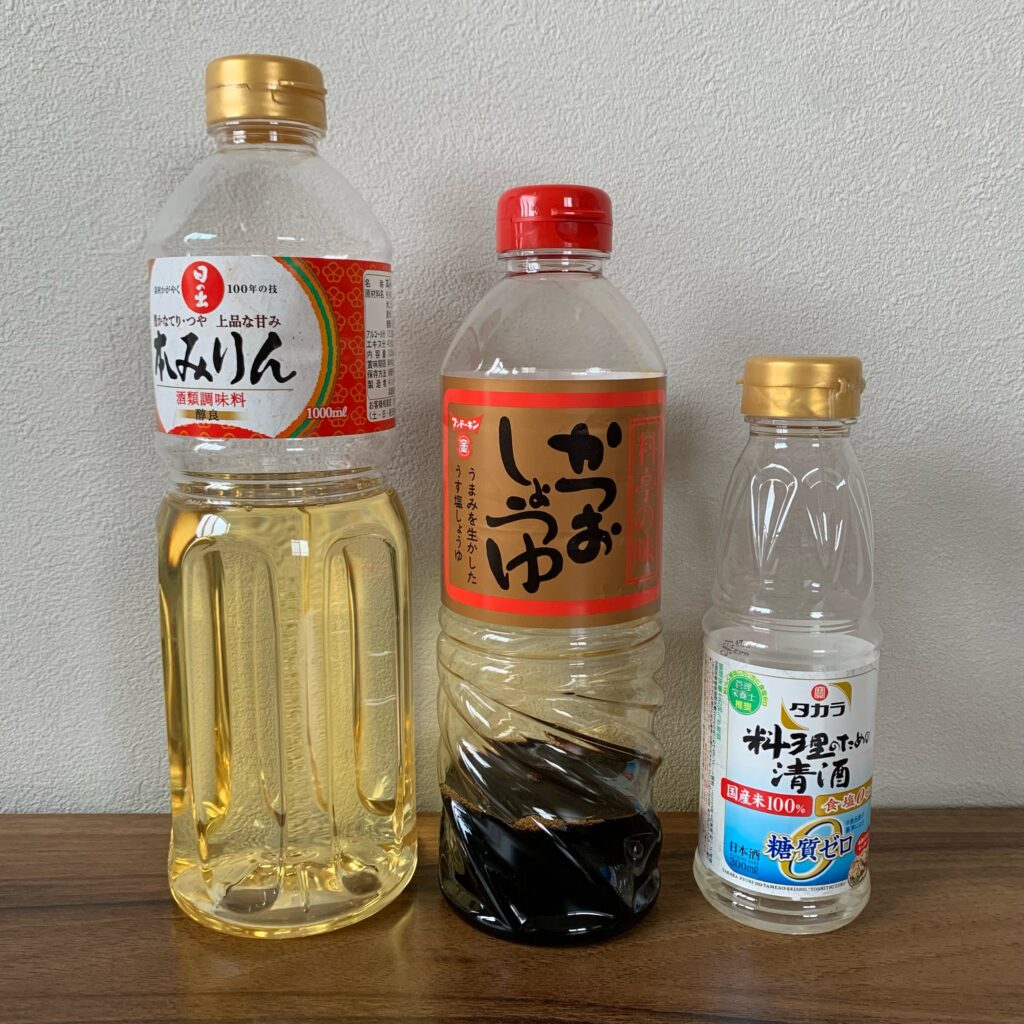
How to make Torigobo (stir-fried chicken burdock)
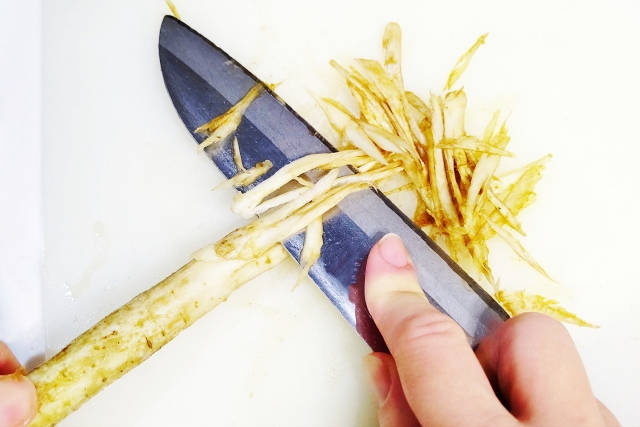
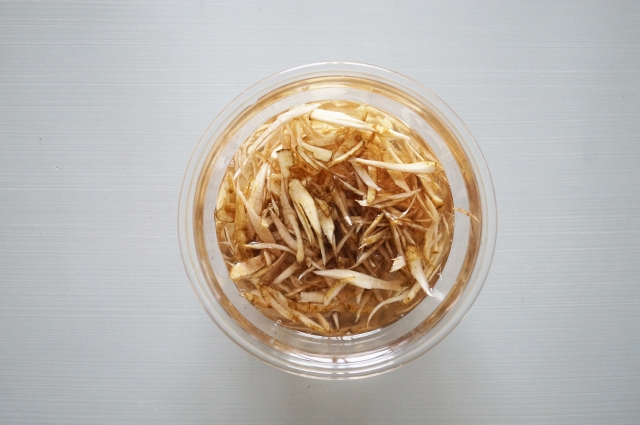
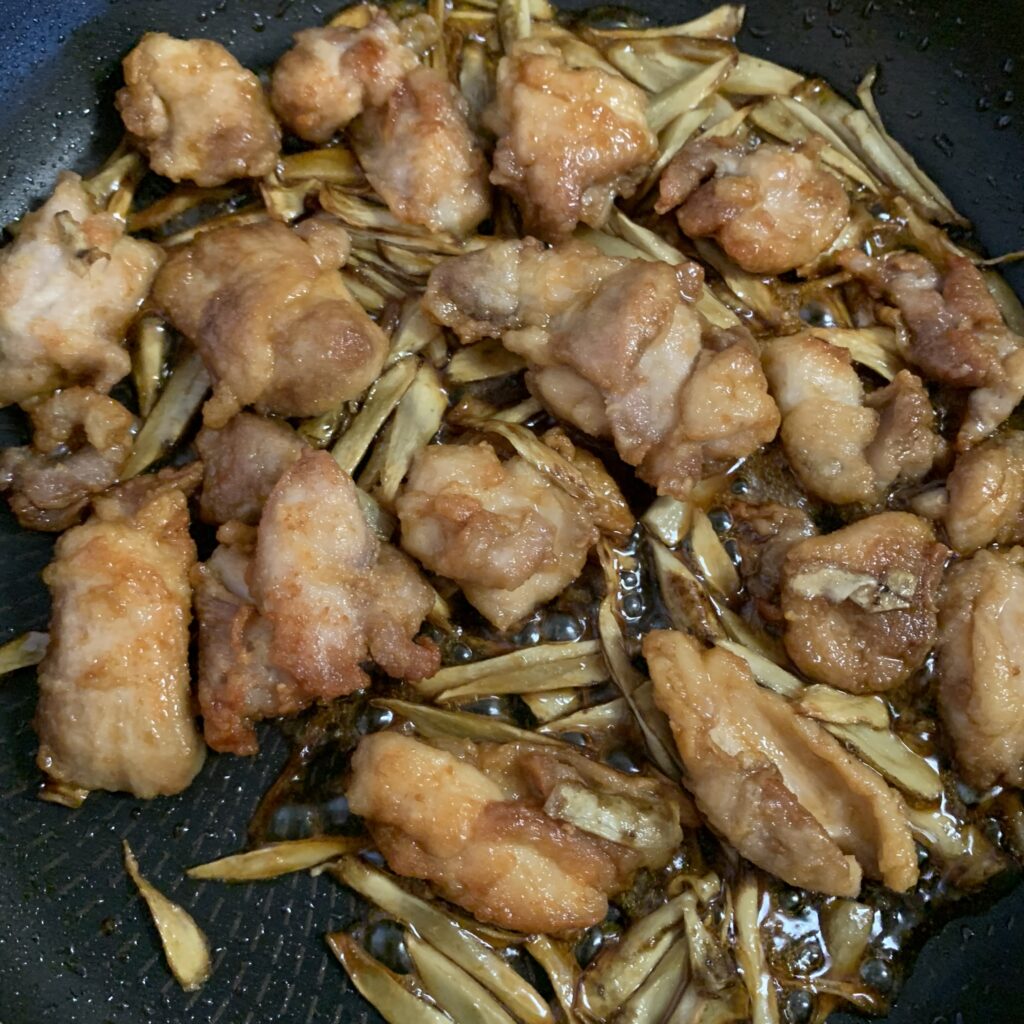
- Scrape off the burdock skin with a back of knife.
- Shaving-cut the burdock. Immediately soak cut burdock in water to prevent discoloration. The process of shaving ingredients is called ”削ぎ切り=sogi giri” or “ささがき=sasagaki”.
- Remove the chicken thigh skin and cut it into bite-sized pieces. ※The skin is removed to reduce calories.
- Rub the chicken thighs with salt.
- Sprinkle chicken thighs with wheat flour. It is recommended to use non-sticky cooking flour.
- Heat oil in a pot ,and fry at 170° for 8 minutes. (170 degrees Celsius is 338 degrees Fahrenheit.) The amount of oil should be enough to cover half of the chicken.
- After frying, put it in a tray and drain the oil.
- While the meat is being fried, heat the sesame oil in a frying pan and fry the burdock root.
- When the moisture in the burdock is gone, turn off the heat.
- Add chicken thighs, soy sauce, sugar, mirin, and sake to a frying pan and heat over high heat.
- It is complete when you can smell the fragrant soy sauce.
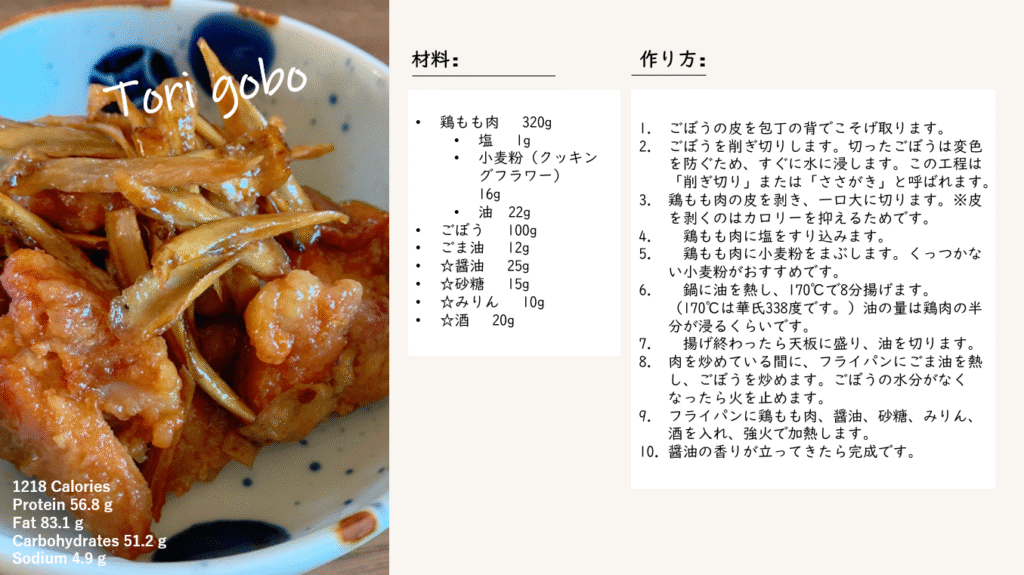
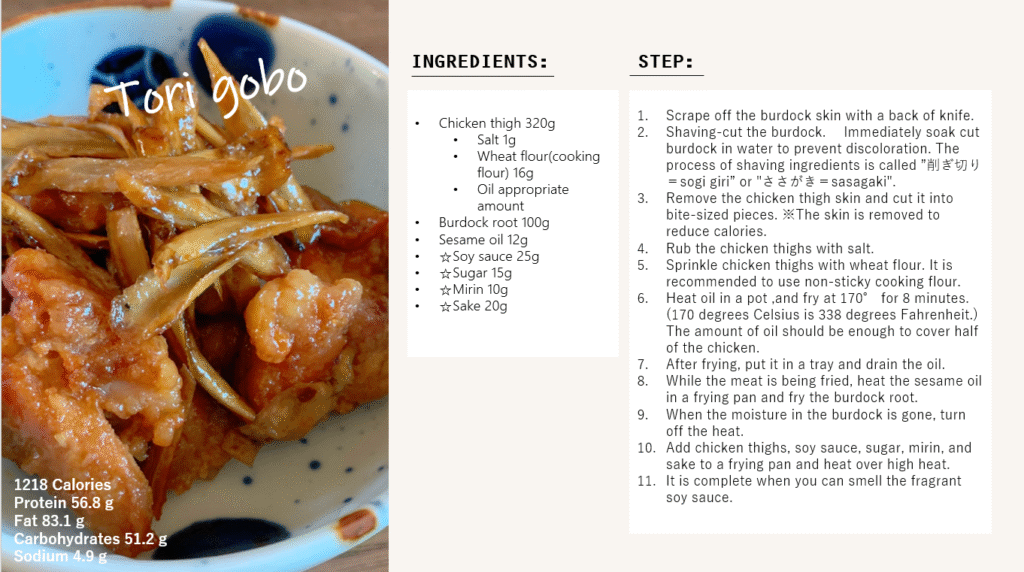
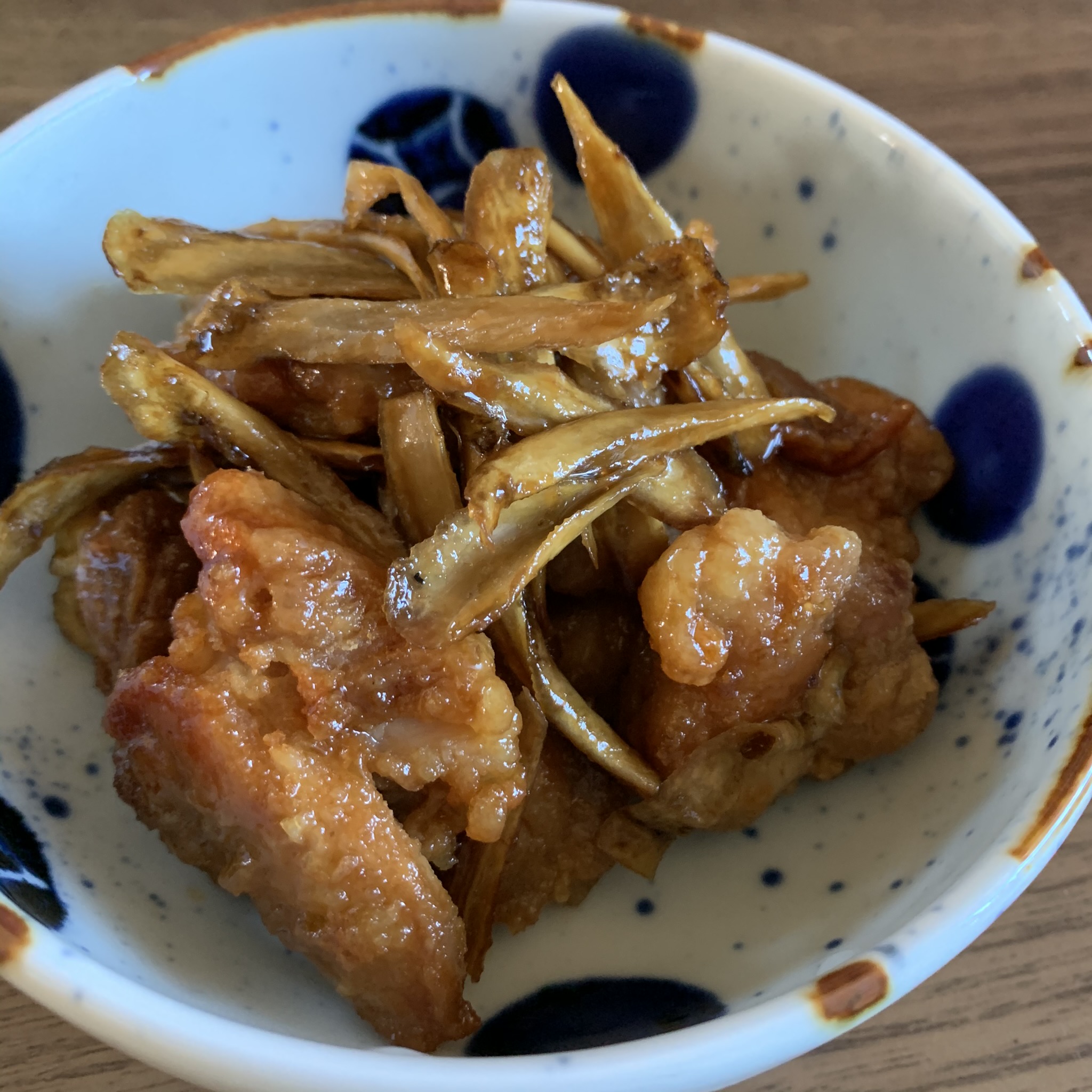

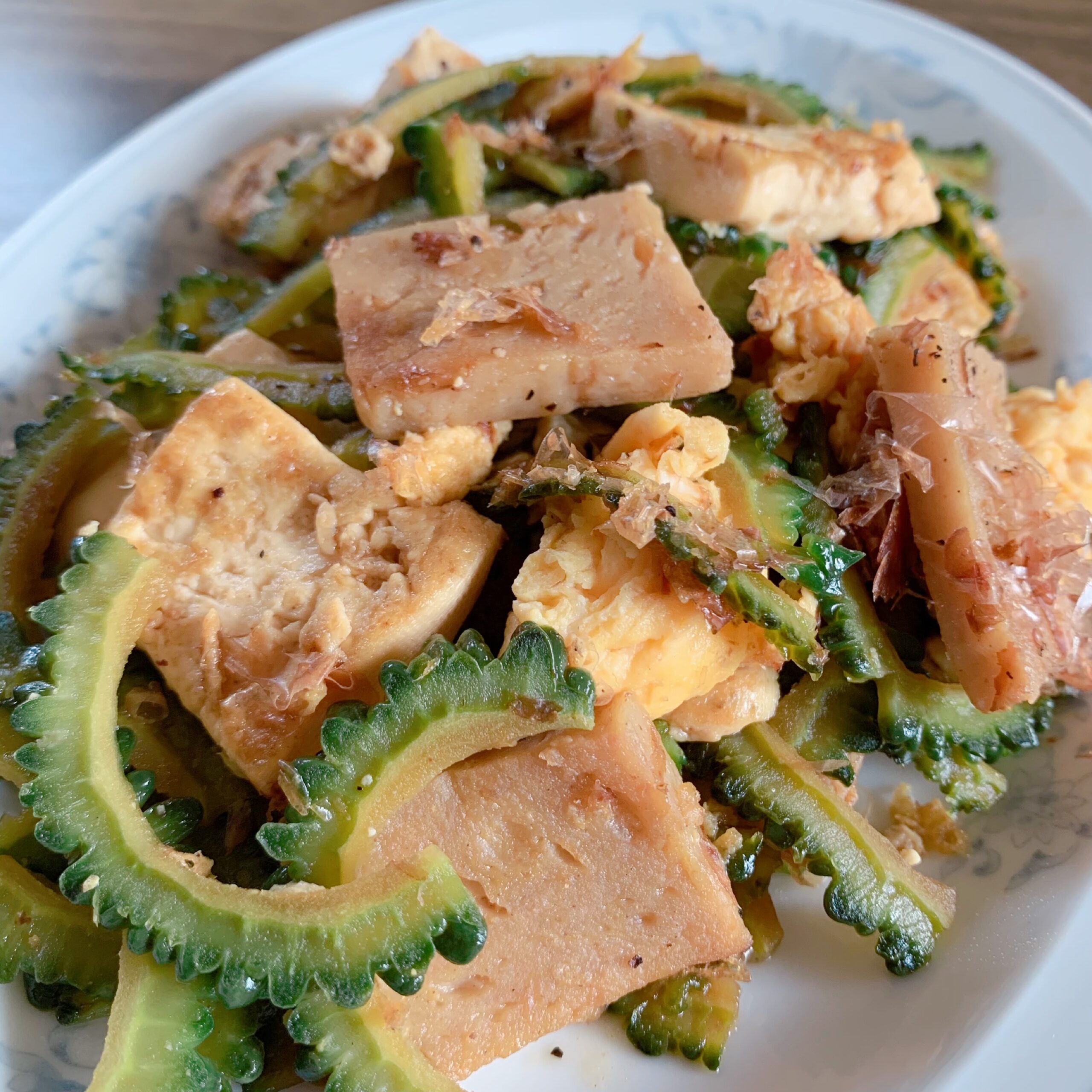
コメント